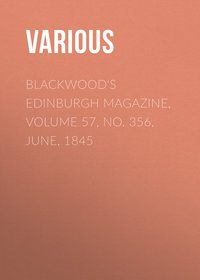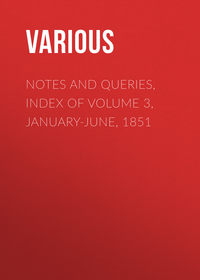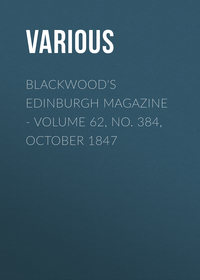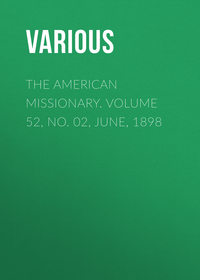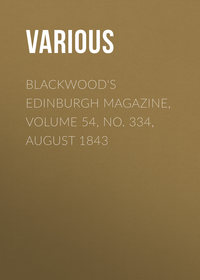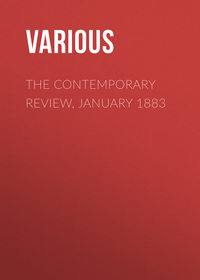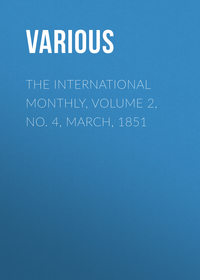 полная версия
полная версияNotes and Queries, Number 57, November 30, 1850
Can any of your readers point out an engraving of the old Konigs or Kaiserstuhl, at Rheuse, on the Rhine, as well as of its restoration in 1848, after being destroyed by the hordes of revolutionary France, in 1792? It is not in Merian or Zeiler. I have seen it, but cannot call to mind the author. Perhaps Alsatia Illustrata?
WILLIAM BELL, Phil. Dr.Dancing the Bride to Bed—Old Hewson the Cobler.—I have a tune called "A round dance to dance the bride to bed." Can any of your readers favour me with notices of such a custom prevailing? The tune dates about 1630 or earlier, and resembles that of "The Hunt is up."
Another, printed about 1730, is called, "My name is Old Hewson the Cobler." Is this a cavelier's song in ridicule of the Roundhead Colonel Hewson; and are the words to be found?
WM. CHAPPELL.[We trust these Queries may be regarded as a sign that Mr. Chappell is preparing a new edition of his valuable collection of National English Airs.—ED.]
Duke and Earl of Albemarle.—Albemarle has given a title of duke to the celebrated General Monk, and that of earl to the family of Keppel. Will some of your correspondents tell me where there is any place called Albemarle, which gives rise to these dignities, or why this title was assumed by these families?
J.REPLIES
JULIN, THE DROWNED CITY
(Vol. ii., p. 282.)It does not at all follow, that if a city perished by the encroachment of the sea, it was a very striking event at the time: it might have happened gradually, not suddenly. Instances both ways seem to have occurred on the shores of the German Ocean (see Lyell's Principles of Geology, ch. 16.). A great flood happened in 1154 (Helmold, p. 216. b. ii. c. 1. s. 5.), but it is mentioned with respect to the oceanic rivers only, and not as to the Baltic, or destruction of houses or buildings.
But was Julin drowned at all? Helmold does not say that it was (his account is in Book i. c. 2. s. 5.); and he does say that it was not, but destroyed by a certain Danish king. It is most inconceivable that he should not have known who the Danish king was, if it happened in his own time. The passage savours of much later interpolation.
Koch, Rivol. vol. i. p. 280., states positively that Julin was Wollin, and was destroyed by Waldemar I. in 1175, for which he seems to rely upon Helmold, or at least his continuator, Arnold. Helmold himself died in 1170.
Saxo Grammaticus lived at that time, and was probably well acquainted with the events, since he was intimate with Archbishop Absolon, who took part in them in a military as well as ecclesiastical sense. In p. 333. he says:
"Waldemar the 1st, goes with a fleet through the month of the river Zwina, then to the river which adjoins Julin and Camin, and has its mouth divided into two. There was a long bridge joining the walls of Julin. The king having landed 'ex adverso urbis in ripa Australi, pontem disjici jussit.' The king cleared the way for his fleet; got to an island Chrisztoa; crossed the river and went to Camin. He went out to sea by that mouth."
This is given very much at length.
All this is the geography of the present day, and the names, if you read Wollin for Julin. The Oder expands into a wide lake, shut off from the sea by a bar of land, through which there are three channels. The Zwein is the middle one of the three; that which passes by Wollin and Kimmin is the eastern one.
In p. 347. he says:
"Rex … classem … Zuinsibus ostiis inserit, Julinique vacuas defensoribus ædes, incendio adortus, rehabitatæ urbis novitatem, iterata penatium strage, consumpsit.... Juilinenses, cum urbis uæ recenses ruinas, ferendæ obsidioni, inhabiles cernerent, perinde ac viribus orbati, deserta patria, præsidium Caminense petiverunt, aliena amplexi mœnia, qui propria tueri diffiderent."
In p. 359. he says: The king "per Suinam invectus, Julinum oppidum, incolarum fugâ desertam, incendio tentat."
Saxo mentions Julin, p. 182-24.: "Nobilissimum illius provinciæ oppidum," under Harold Blatand, King of Denmark, who reigned in the latter half of the ninth century. He put a body of troops into it, who became dreadful pirates.
In p. 225. he says that the Danes compelled them to give up their pirates, who were punished. In p. 381., in the reign of Canute, son of Waldemar, there is an expedition against the Julinenses, the result of which is expressed "Julinensium rebus absumptis."
In p. 382., the king sets out for Julin, but seems to have attacked only Camin. Waldemar died in 1182, Canute, 1202 (Koch.)
Arnold (b. iii. c. 8. s. 4.) speaks of the Sclavi as finally subdued and made tributary, about 1185.
In the notes to Saxo (p. 197.) there is a long extract about Wollinum, from Chytræus, a writer who lived 1530-1600, taken from the information of a learned old man whose uncle was born there. He says he went there to see, accompanied by many of the principal inhabitants, the remains of Julin, destroyed in 1170 by Waldemar. Wollin he calls "mediocris civitas." From the ruins, it had been more than a German mile round. Part of it was "ineditiore paulum colle." He speaks of four montes, which had castles. He says Wollin is "non aspernenda civitas," but not a thirtieth part of the ancient size.
C.B.I regret that my questioner V., from Belgravia (Vol. ii., p. 379.), should have felt aggrieved that, upon his request for my story, I should have been compelled to reply, in the words of the Ancient Mariner:
"Story! bless you, sir, I have none to tell."As he seems, however, so assured that some account of the destruction of a city of such opulence and renown as Vineta must exist, I shall be extremely happy to learn it from him. I can assure my friend V. that neither Kanzow nor Micrœlius (who has, however, a plan of the stone pavement of its streets at the bottom of the Baltic), nor Giesebrecht, in his Wendische Geschichten (Berlin, 1844, 3 vols. 8 vo.), know anything beyond what I have stated. And as to a great port disappearing in the ocean, without any cotemporary notice, the instances are frequent; as remarkable a one as any occurs in our own island, and at a much later period:—Ravenspur, which was a sea-port of the greatest importance, where certainly Henry IV., and, as some say, Henry VII., landed from the opposite continent, to claim and conquer their crowns, and where the father of De la Pole, Duke of Suffolk, was a merchant, is now so totally lost from memory and the earth, that its very site is unknown, whether within the Humber, or outside the Spurn; possibly where now the reef called Stony Binks at the mouth of that æstuary is situated.
So far, however, as an actual legend is concerned with the destruction of a great emporium of commerce, I am happy I can supply your correspondent with one, possibly the more acceptable as it is of another famous city, not very remote from Vineta, and is not without relations belonging to the latter: I allude to the town of Wisby, Visbuy, Visbye, Visburgum, on the island of Gothland, of which the following account is found in an old Latin description of Sweden:
"Insulæ unica civitas, olim potentia splendore et magnitudine celebris, tantarum rerum jactura fracta in exiguos fines se contraxit et oppiduli speciem refert, ut Jansonii Atlas docet. Arx prope portum satis valida. Emporiis illis Pomeraniæ clarissimis Wineta et Julin pessum euntibus, Visbya inter omnia Regionum oppida floruit. (Olaus Magnus, l. 10. cap. 16.) Licet urbs vetustissima Visbycensis potentissima ac opulentissima quondam fuerit et pro minima occasione, nempe fractionis unius fenestralis vitri vix valoris obolaris, humiliata sit, tamen leges maritimæ et decisiones omnium controversiarum singulariter longe latèque observantur. Ex distructa autem Vineta Gothlandos incolas marmor, ferrum, cuprum, stannum, argentum, et inter alia duas ænei portas grandis ponderis petiisse, et secum in Gothlandum avexisse ferunt."
I need not remind your readers that the maritime code of Wisby even now influences many of the most important decisions affecting our present mercantile shipping, it having been the model of the Laws of the Acquitanian Islands of Re and Oleron, which Richard I. ordered to be observed in England, and which are still frequently acted on. It is, however, to the notice which I have marked in Italics that I would call the attention of V.,—the destruction of the city on account of a small pane of glass not the value of an obolus: and as he, no doubt, has interested himself on these northern histories, request him to explain the circumstance more in detail. I myself have often determined on searching Pontanus, and other ancient Danish authorities, but hitherto neglected, and therefore know nothing about the matter.
As to the gates, which are more especially mentioned amongst the spoils of the ruined Wineta, we find them also noticed in the same work, at its account of Wineta:
"Urbem frequentabant Græci aut potius Russi multarumque aliarum nationum mercatores, quorum affluxus frequens civibus ingentes divitias et facultates conciliavit: adeo ut portæ civitatis ex ære paratæ, et argentum tam vulgare ibi esset ut ad communium et vilium rerum usum adhibetur."
To go, however, completely into the history of these gates would require a volume. It would be necessary to commence with the great veneration for gates in general throughout the north: whether the name of their great god Thor (a gateway) is cause or consequence would have to be considered, and his coincidence, in this respect, with Janus and Janua, the eldest deity of the Italians, which I have more largely discussed in an Essay on a British Coin with the Head of Janus, in the 21st No. of the Journal of the British Archæological Association. Next, the question would arise, whether these gates have not been migratory, like those of Somnauth, which Mahmoud took to Gazni from a similar principle of deeply-rooted ancient veneration,—relics of sanctity rather than trophies of victory, and which Lord Ellenborough was so unjustly ridiculed for endeavouring to restore. Thirdly, therefore, also whether the famous gates of the cathedral of Novogorod may not be identical with those which have successively adorned Vineta's and Wisby's portals; and whether those which are still the ornament of the west door of the cathedral of Hildesheim, (which, according to the inscription which crosses their twenty scriptural bas-reliefs, were cast by Bereward, the thirteenth bishop, in 1015), may not be an existing and beautiful example; as is the bronze column, with the bas-reliefs of passages of the New Testament winding round it, and placed in the same cathedral close. It would not be too much to surmise, that even the beautiful gate of the Florence baptistery are from the same atelier, as an old Italian author sings:
"O Germania gloriosa,Tu vasa ex aurichalcisAd nos subinde mittes."WILLIAM BELL, Phil. D.NICHOLAS FERRAR AND THE SO-CALLED ARMINIAN NUNNERY OF LITTLE GIDDING
(Vol. ii., pp. 119. 407.)Hearne, the antiquary, has preserved two curious documents relating to the Little Gidding establishment in the Appendix to his Preface to Peter Langtoff's Chronicle, Nos. IX. and X. See also Thomæ Caii Vindiciæ, vol. ii. The most complete account of this remarkable man is that by Dr. Peckard, formerly Master of Magdalen College, Cambridge, entitled Memoirs of the Life of Nicholas Ferrar, published in 1790, which has now become extremely scarce, but has been reprinted by Dr. Wordsworth, in his Ecclesiastical Biography, who has given in an Appendix an account of the visit of the younger Nicholas Ferrar to London, from a MS. in the Lambeth Library. The Life of Nicholas Ferrar, by Dr. Turner, Bishop of Ely, came into the hands of the celebrated Dr. Dodd, who published an abridgment of it in the Christian Magazine of 1761. This account was again republished, with additions, in 1837, entitled Brief Memorials of Nicholas Ferrar, Founder of a Protestant Religious Establishment at Little Gidding, in Huntingdonshire, by the Rev. T.M. Macdonogh, Vicar of Bovingdon. Some further particulars of this family may be found in Barnabas Oley's preface to Herbert's Country Parson, and in Bishop Hacket's Life of Archbishop Williams. In Baker's MSS. (vol. xxxv. p. 389.) in the Public Library of Cambridge, is an article entitled "Large Materials for writing the Life of Mr. Nicholas Ferrar." Isaac Walton, in his Life of George Herbert, also notices Ferrar, and describes minutely his mode of life at Little Gidding. From an advertisement at the end of Francis Peck's Memoirs of Cromwell, it appears that Peck had prepared for publication a Life of Mr. Nicholas Ferrar, no doubt the manuscript collections noticed by MR. RIMBAULT (p. 407.):
"Little Gidding," it has been observed, "was in England what Port Royal was in France. Ardent devotion to the Redeemer characterised both. In each, peace, charity, good order, and love to the souls and bodies of men, were eminently exhibited; upon each the hand of persecution fell with unrelenting severity. Port Royal was destroyed by the Jesuits; Little Gidding by the Puritans."
J.Y.Hoxton.Arminian Nunnery in Huntingdonshire (Vol. ii., p. 407.).—Allow me to refer DR. RIMBAULT to Hacket's Life of Archbishop Williams, Part ii. p. 50.; Izaak Walton's Life of George Herbert; Peter Langloft's Chronicle, ed. Hearne, Preface, sect xi., Appendix to Preface, Nos. IX. and X.; Caii Vindiciæ Antiquitatis Academiæ Oxoniensis, ed. Hearne, vol. ii. p. 683. 693. 697. 702. 713.; and Memoirs of the Life of Mr. Nicholas Ferrar, by Peter Peckard, D.D., Cambridge, 8vo., 1790 (which is reprinted with additions from a manuscript in the archiepiscopal library at Lambeth, in Dr. Wordsworth's Ecclesiastical Biography). In Dr. Peckard's Preface will be found somewhat respecting "the loss (probably the unjust detention)" of Francis Peck's manuscript life of Nicholas Ferrar, apparently the same manuscript which DR. RIMBAULT states he has seen.
C.H. COOPER.Cambridge, November 16. 1850.In Nichol's Litterary Anecdotes, vol. ii. p. 519., it is stated that "a capital account of the family of Ferrar was compiled by Mr. Gough for the sixth volume of the second edition of the Biographica Britannica." Of the only two copies known to exist of the printed portion of this sixth volume Mr. Chalmers possessed one, and he seems to have used it in the preparation of the life of Ferrar for his Biographical Dictionary.
JOHN J. DREDGE.DR. RIMBAULT will find many interesting particulars relating to the so-called "Arminian Nunnery," and the family of Ferrars, together with an account of the present state of the place, in a paper by C. Colson, B.A., Fellow of St. John's College, entitled "An Account of a Visit to Little Gidding, on the Feast of S. Andrew, 1840," published in the first part of the Transactions of the Cambridge Camden Society, Stevenson, Cambridge, 1841.
E.V.Dr. Peckard appears to have had the use of some of Peck's MSS. (perhaps those referred to by DR. RIMBAULT), but he regrets the loss of a MS. which he had lent to the Rev. Mr. Jones, of Sheepshall, being, a Life of Nicholas Ferrar, by Peck, prepared for the press, but which, after near twenty years' inquiry, he had been unable to recover. This suggests the Query, Has it ever yet been recovered? DR. RIMBAULT'S inquiry regarding Thomas Hearne has been answered by Dr. Dibdin (Bibliomania, London, 1811, p.381.) who informs Dr. Peckard, Dr. Wordsworth, and his Quarterly Reviewer (p. 93), that Hearne, in the Supplement to his Thom. Caii Vind. Ant. Oxon., 1730, 8vo., vol. ii., "had previously published a copious and curious account of the monastery at Little Gidding," which he says "does not appear to have been known to this latter editor," meaning Dr. Wordsworth. I have not Hearne's work to refer to; but Dr. Dibdin versus Dr. Wordsworth and his Reviewer, as to ignorance of what so well-known an author as Tom Hearne has written, is a little curious. The word "Arminian," in DR. RIMBAULT'S Query, requires a remark. On reading the Memoir which Dr. Wordsworth has edited, he will find (Appendix, p. 247.) that the Ferrars complained of "a libellous pamphlet, entitled the Arminian Nunnery at Little Gidding in Huntingdonshire," and that they repudiated "Arminianism and other fopperies." This suggests a further Query: Is DR. RIMBAULT possessed of that pamphlet? The attachment to books manifested by the Ferrars family entitles them, I humbly think, to as much space as your "NOTES AND QUERIES" can afford them.
J.D.N.N.Renfrewshire.If DR. RIMBAULT or any of your correspondents could furnish a reply to any of the Queries inserted by you in Vol. ii., p. 119., relative to the memoir published by Peckard, and other matters connected therewith, I should feel obliged.
MATERRE.Mr. Henning of Hillingden, a descendant of the Ferrar family, through his great-uncle, Dr. John Mapletoft, (see Ward's Lives of the Gresham Professors), who was the great-nephew of Nicholas Ferrar, possessed one of the three curious volumes arranged by members of the family, viz.—A Digest of the History of our Saviour's Life, with numerous plates. One of these copies was presented to Charles I. on his going into the North; another to Charles II. at the Restoration; the third remained in the family. Can any of your readers tell us whether the copies given to the two kings exist, and if so, who are the present possessors of them?
J.H.M.BathVINEYARDS
(Vol. ii., p. 393. 414.)CLERICUS will find some information in the Gentleman's Magazine for the year 1775 (vol. xlv. pp. 513. 632.) which will direct him to a still fuller discussion of the subject in the third volume of the Archæologia.
N.B.At Rochester there is a field so called; it is a very favourite walk. In the neighbourhood of the Cathedral at Bath, there is one side of a street so called.
S.S.A part of the town of Richmond (Surrey) is called "the Vineyard." The name, of the origin of which I am ignorant, is applied to a collection of small houses between the Roman Catholic Chapel and the Rose Cottage Hotel.
W.A.G.In the fields between Buckden and Diddington, in the county of Huntingdon, there is what is called "the Vineyard" at the present day; and connected therewith is what is called, and evidently from the shape has been, a "fish pond." In Buckden is the abbot's house, with the original door; and there is no doubt but what the above was, in olden times, belonging to a religious house in that part.
M.C.R.A small close of land adjoining the churchyard at Oiston, Nottinghamshire (due west of the church), goes by the name of "the Vineyard."
P.P.There is also a street at Abingdon called "the Vineyard," from the land having been formerly used for that purpose by the Benedictines of Abingdon Abbey. If my memory do not betray me, there is some interesting information on the early cultivation of the vine in England, in an article by Mr. T. Hudson Turner, in the Archæological Journal, which I have not now at hand.
H.G.T.There was a vineyard belonging to Ely Place, Holborn: and another probably in the Abbey grounds at Westminster. A portion of the estate of the late Chas. Powell, Esq., of Hinton Court, near Hereford, was called the "Vineyard" and the Vineyard of the Monks of St. Mary's is yet pointed out by the good folks of Beaulieu in Hampshire. The vineyards of Bath are in the heart, not the suburbs of the present town.
MACKENZIE WALCOTT, M.A.TREATISE OF EQUIVOCATION
(Vol. ii., p. 168.)As supplementary to J.B.'s valuable paper on the Treatise of Equivocation, I transcribe the following from the Smith Manuscripts (num. lxix. 5. p. 35.), thinking it may leave an interest for some of your readers:—
"Apud, D.P. 13th of May, 1597.
Gerard the Jesuite, his Defence of Æquivocation.
John Gerard, the Jesuite, being told that, upon the arraignment of Sowthwell the priest of high treason, one of the witnesses being asked upon her oath by one of the judges, in open court, whether Sowthwell were ever in Bellamie's house, said that she had been perswaded by Sowthwell to affirme upon her oath, that she did not see Sowthwell in Bellamie's house and to keep this secret in her mind, of INTENT TO TELL YOU, whereas in truth she had seen him diverse times in Bellamie's house; and Sowthwell being charged therewith, openly confessed the same, and sought to justifie the same by the place out of Jeremie, that a man ought to swear in judicio, justitiá, et veritate. Now, this John Gerrard, being asked what his opinion and judgment was concerning Southwell's opinion above said, said that he was of the same opinion, and seemed to justifie the same by the example of our Saviour Christ, who said to His disciples, that you shall go to Jerusalem, Ego autem non ascendam, keeping this secret to himself, of INTENT TO TELL YOU. And also sayeth that our Saviour Christ said, that the Son of Man did not know of the day of judgment, keeping this secret to himself, OF INTENT TO TELL YOU; for he sayeth, that as he was Son of Man he knew it, and could not be ignorant of any thing: and furder sayeth, that a witness being examined, juridicè and of temporal things, not concerning religion or Catholics, cannot answer with such æquivocation as is above said. And, forasmuch as this opinion and the defence thereof seemed to be damnable and blasphemous, he was required to sett down his own opinion therein, least he should be mistaken; but he denied the same, not because it is untrue, but because he would not publish it. Then being required to subscribe the same, denied the same also.
RICHARD BARKLEY.
WILLIAM WAAD.
EDWARD COOK.
THOMAS FLEMING."
The reference "Apud. D.P.," which stands as I have placed it above, may perhaps enable some of your contributors to point out the source from which this account is derived. The date at the top appears to have been added by a later hand.
J. SANSOM.Oxford, Nov. 1850.RIOTS IN LONDON
(Vol. ii., pp. 273. 332.)Will you do me the favour to insert the following attempt to set right and disentangle the thread of my narrative respecting the death of young Allen. Certain it is that I was not "an actor nor spectator," in the riots of 1768, for they occurred some little time before I was born! It is equally certain that a man well remembered by me as our servant, whose name was "Mac," was a soldier concerned in the affair of Allen's death. As all the three soldiers had the prefix of "Mac" to their names, I cannot tell which of them it was, but it was not the man who really shot Allen, and was never again heard of; for "Mac," whom I so well remember, must have lived with my father after the affair of 1768, or I could not have known him. In my youthful remembrance, I have blended the story about him with the riots which I had witnessed in 1780: this is the best and only explanation I can give. Sure I am, that all my father related to me of that man was true. I presume the "Mac" I knew must have been Maclane, as your correspondent E.B. PRICE thinks probable, because of his trial and acquittal, which agrees with my father's statement; and especially as he was singled out and erroneously accused of the crime—as the quotation above referred to states. All I can say is, I can relate no more; I have told the story as I remember it, and for myself can only apologise that (though not so old as to witness the riots of 1768) I am old enough to experience that Time has laid his hand not only on my head to whiten my locks, but in this instance compels me to acknowledge that even the memories of my early days are, like the present, imperfect. The failure is with me, not with my father.
This vindication of my honourable parent's undoubted veracity reminds me of a circumstance that I have read or heard in a trial with regard to a right of way across an inclosure. Several aged men had given their evidence, when one said, "I remember that a public footpath for more than 100 years." "How old are you?" said the counsel. "Somewhere about eighty," was as the reply. "How then do you remember the path for 100 years?" "I remember (said the old man firmly), when a boy, sitting on my father's knee, and he told me of a robbery that took place on that footpath; and so I know it existed then, for my father never told a lie." The point was carried, and the footpath remains open to this day, to tell to all generations the beauty of truth.




